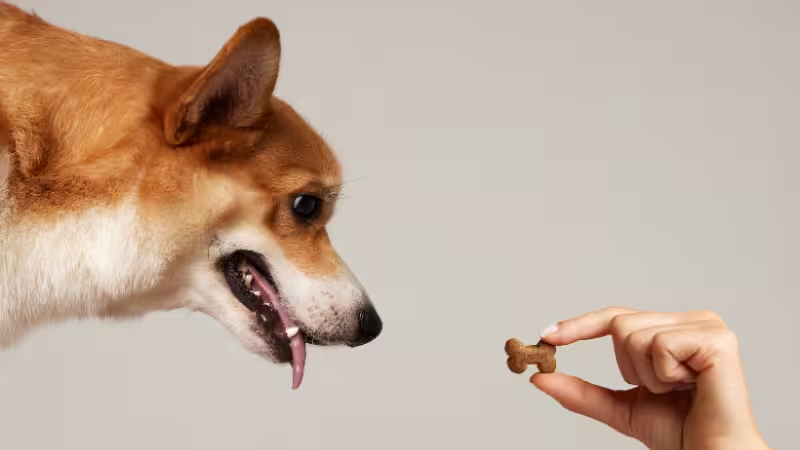Training your dog should be about communication, trust, and consistency—not fear or punishment. Positive reinforcement dog training has become one of the most effective and humane methods for teaching desired behaviours while strengthening the relationship between dog and owner. It focuses on rewarding the behaviours you want to see more of, turning learning into an enjoyable experience for both of you.
Table of Contents
Understanding Positive Reinforcement
Positive reinforcement means adding something pleasant immediately after your dog performs a desired behaviour. When a dog sits on command and receives a treat or verbal praise, the positive consequence makes it more likely that the dog will repeat that behaviour in the future.
This method works because dogs learn through association. By pairing an action with a rewarding outcome, you’re clearly communicating what you want them to do. Over time, your dog connects specific actions—like sitting, staying, or walking calmly on a lead—with positive outcomes such as treats, play, or affection.
The Science Behind Reward-Based Learning
Positive reinforcement stems from the psychological principle of operant conditioning. Behaviour that is followed by a pleasant outcome is strengthened, while behaviour that produces no reward eventually fades away.
Unlike punishment-based training, which can cause fear or confusion, positive reinforcement encourages curiosity, confidence, and trust. Dogs trained with rewards learn to make decisions and respond to cues willingly because they associate training with something enjoyable.
Choosing the Right Reward
Every dog is unique, and what one finds rewarding may not motivate another. Food is often the easiest and most effective reinforcement tool, especially for young dogs still learning the basics. High-value treats such as small pieces of chicken or cheese work well for difficult tasks or distractions.
However, not all dogs are food-driven. Some prefer toys, affection, or verbal praise. The key is to observe what excites your dog the most and use that as motivation. Changing up rewards keeps training sessions fun and engaging.
Timing Is Everything
For positive reinforcement dog training to work, timing must be precise. The reward should come immediately after the desired behaviour so your dog can clearly link the two. Delayed rewards make it harder for your dog to understand what action earned the praise.
Using a marker word like “yes” or a clicker sound helps identify the exact moment your dog performs correctly. The click or word becomes a bridge between the behaviour and the reward, improving communication and consistency.
Starting with the Basics
When teaching new behaviours, it’s best to start simple. Begin in a quiet environment with few distractions. Break tasks into small, achievable steps and reward every success, no matter how small. As your dog begins to understand, you can gradually make the exercises more challenging.
For instance, if you’re teaching your dog to “stay,” start by rewarding them for remaining still for one or two seconds. Slowly increase the duration and distance as your dog becomes more reliable. Patience and repetition are essential.
Shaping and Fading Techniques
Shaping means rewarding successive approximations of the desired behaviour. This is useful for complex tasks, such as teaching a dog to roll over or fetch an item. You reward small steps that lead up to the final action, guiding your dog towards success rather than expecting perfection from the start.
Once your dog consistently performs a behaviour, you can begin fading out continuous rewards. Instead of rewarding every time, switch to intermittent reinforcement. Random, unpredictable rewards keep your dog motivated and strengthen the behaviour long-term.
Avoiding Common Training Mistakes
One of the biggest pitfalls in dog training is accidentally rewarding unwanted behaviour. For example, if you give attention to a dog that’s barking or jumping, you may reinforce that behaviour even if the attention is negative. Consistency is key—ignore unwanted actions and reward calm, appropriate ones instead.
Another mistake is relying solely on treats. While food is a powerful motivator, overusing it can cause dependency. Gradually replace treats with verbal praise, petting, or play to maintain motivation while building lasting habits.
Managing Unwanted Behaviour Humanely
Positive reinforcement doesn’t mean you ignore bad behaviour—it means you manage it without fear or force. Techniques like redirection and negative punishment (removing a reward) are effective alternatives. For example, if your dog jumps for attention, simply turn away until all four paws are on the ground, then reward calm behaviour.
Avoid physical punishment or shouting, as these can damage your bond and make your dog anxious or defensive. Training should build trust, not fear.
The Role of Consistency and Environment
Dogs thrive on routine and clear communication. Everyone in the household should use the same cues and reward system to prevent confusion. Consistency ensures your dog understands expectations no matter who is giving the command.
Training environments also influence success. Start in a quiet space before introducing distractions such as other dogs, new people, or noisy areas. Gradually increasing the challenge helps your dog learn to focus in different situations.
Building a Lifelong Partnership
Positive reinforcement dog training is more than just teaching commands—it’s about nurturing a relationship based on mutual understanding. A dog trained through rewards learns to trust, listen, and engage willingly. Training sessions become moments of shared joy and cooperation rather than confrontation.
The benefits extend beyond obedience. Dogs trained with kindness are more confident, adaptable, and emotionally secure. They are better equipped to handle stress, meet new people, and interact with other animals calmly.
From Treats to Trust
Eventually, tangible rewards like food become less necessary as your dog begins to find satisfaction in praise, attention, and success itself. The ultimate goal of positive reinforcement is not dependence on treats but a dog that responds because it enjoys pleasing you and understands the behaviour is worthwhile.
This transformation marks the true success of positive reinforcement dog training—a well-behaved dog that acts out of trust and confidence, not fear or obligation.
Why Positive Reinforcement Works
Studies and professional trainers alike agree that positive reinforcement leads to faster learning, stronger bonds, and fewer behavioural issues. It promotes a healthy emotional state for dogs and fosters a sense of teamwork rather than control.
When you teach through encouragement instead of intimidation, your dog learns to see you as a guide and partner. The results speak for themselves: happier dogs, happier owners, and a home built on mutual respect.
Positive reinforcement dog training is not just a technique; it’s a philosophy rooted in compassion and science. By focusing on rewards, patience, and consistency, you create an environment where your dog feels safe to learn and eager to please. The result is a loyal, confident companion who thrives on your praise and trust—proof that kindness truly is the most powerful training tool of all.



